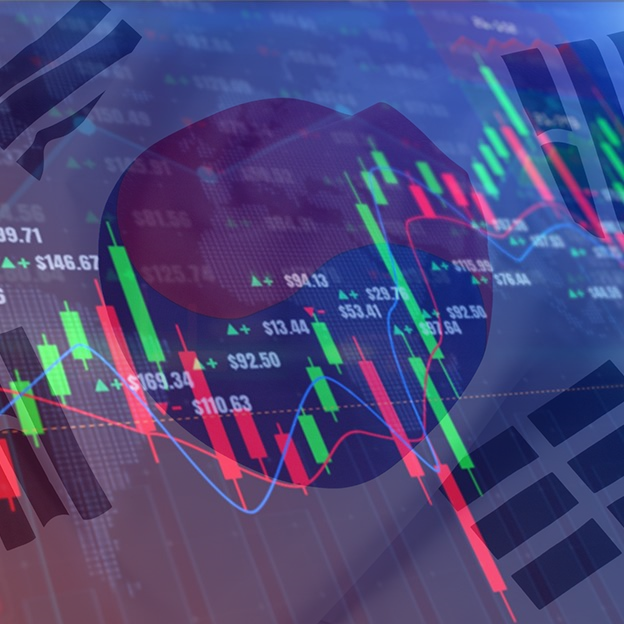The outstanding balance of non-principal-protected ELS products falls in the Korean market, while those principal-protected products increase.
Sales of autocallable-focused equity-linked securities (ELS) in South Korea shrunk over 16% year-on-year to KRW18.3 trillion (US$13.9 billion) in the first half of the year, data from the Financial Supervisory Service (FSS) released last Friday shows.
Nearly 57% of which stemmed from principal-protected ELS products, recording KRW10.8 trillion, up over 76% compared with last year’s same period.
The rising sales of these capital-protected-focused products were attributed to ‘the balloon effect caused by the decline in the issuance of non-principal-guaranteed ELS and the high-interest rate environment that allows issuers to pay high yields,’ the country’s financial watchdog stated.
The Korean retail market has been grappling with the sales of non-principal-protected ELS products with lower demand following retail investors’ losses posed by Hang Seng China Enterprises Index-linked products earlier this year and the regulator’s investigation on alleged mis-selling.
By the end of June, the outstanding balance of non-principal-protected ELS was KRW16.1 trillion, down 55% from KRW33.7 trillion seen at the end of last December, according to the FSS, adding it was due to the concentration of maturity repayment of HSCEI-linked ELS in the second quarter.
Meanwhile, the outstanding balance of principal-protected ELS has been on an upward trend over the past year to hover at around KRW34.6 trillion by the end of June.
Lost traction
Out of KRW18.3 trillion of ELS sales in 1H 2024, around one-third stemmed from public offering market, one-third from bank trusts, and some 20% from retirement pensions, according to the FSS data.
‘Bank trust decreased significantly (KRW 6.0 trillion, or 50.4%) compared to the same period last year (KRW 11.9 trillion) due to reasons such as temporary suspension of ELS sales by major banks in the first half of the year,’ the regulator said.
By asset classes, the stock-linked ELS saw sales soar nearly 82% YoY to KRW8 trillion as the top-growing within the category.
Products tracking a basket of indices continued to lead the sales among all asset classes but saw a 45% drop to KRW9.2 trillion, led by Kospi 200 (KRW7.6 trillion) during the January-June period. The Korean benchmark index replaced HSCEI to become one of the new favourites underlying exposure among local retail investors this year.
S&P 500 followed closely, gathering sales of KRW6.4 trillion, followed by Euro Stoxx 50 (KRW5.9 trillion) and Nikkei 225 (KRW1.6 trillion).
Among the auocallables’ payoff structures, sales of those without knock-in feature designed amounted to the majority, reaching KRW15.3 trillion in 1H 2024. Sales of ELS with knock-in feature issued during the January-June period decreased by 58% year-on-year to KRW2.9 trillion. Low knock-in products, or ELS with a knock-in level of 50% or lower, dominated among the knock-in ELS products.
Robust sales
The derivative-lined securities (DLS) maintained strong sales in the first half of the year, reaching KRW9.3 trillion in sales, same as last year’s same period, the FSS data shows.
The DLS structure – often tracking interest rates or credit as asset classes – saw the public offering market down 26% YoY to KRW3.9 trillion in 1H, while some KRW5.3 trillion came from private placement.
By asset classes, interest rate topped the issuance league table with KRW6.8 trillion of DLS sales, followed by credit (KRW1.2 trillion), FX rates (KRW0.68 trillion), and others (KRW0.53 trillion).
The outstanding balance of DLS products was KRW29.8 trillion at the end of June, down 1.7% YoY.
As of the end of June 24, the balance of DLS for self-hedging reached KRW53.9 trillion, slightly down from 56.7 trillion seen from last year's same time. Among securities houses, the profit and loss from the issuance and management of DLS products reached KRW371 billion profit in 1H 2024, slightly down from 373 billion seen a year ago.
Increased demand for derivative-linked bonds, which are principal-payment products, led to an increase in the issuance amount and balance, the FSS highlighted.
‘However, since derivative-linked bonds may not be protected depending on the issuer’s credit status and solvency, investors are informed of the related risks,’ the regulator said.
There is a need to strengthen monitoring of the possibility of losses for investors in derivative-linked securities, including monitoring of the distribution of ELS investment discretionary matters based on significant stock indices trends, it added.
Click the link to read the full report of Financial Supervisory Service's ‘status of issuance and operation of derivative linked securities by securities companies in the first half of 2024.’
Do you have a confidential story, tip, or comment you’d like to share? Write to jocelyn.yang@derivia.com
